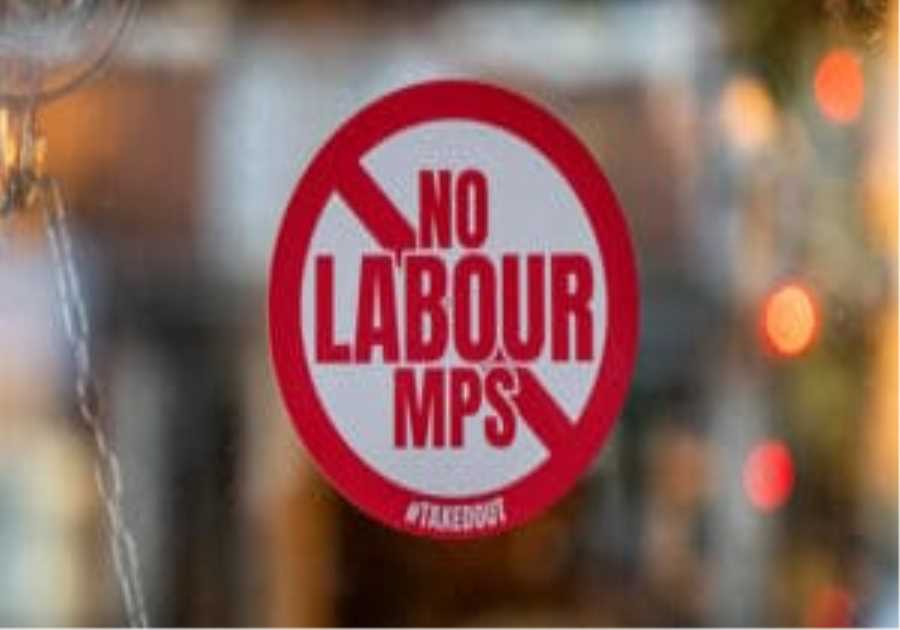A significant part of your stakeholder management activities will usually involve managing stakeholder expectations. It’s one of the most important and trickiest parts of managing your stakeholders. So let’s dig deeper into why it’s important, some essential steps to managing expectations and examples of what it looks like in practice.
Why managing stakeholder expectations is so important
Real talk: you’re not always going to be able to meet the needs of all your stakeholders. There’s often a trade-off involved and sometimes there are winners and losers in a project. The key to good stakeholder management isn’t necessarily about giving your stakeholders the exact outcome they want, but about supporting them through the process and giving them as much opportunity as possible to shape the outcome.
Your stakeholders may not end up liking or supporting the outcome, but they should at least be able to endorse the process and recognize that it was fair and inclusive. Of course, that won’t always happen – you’ll find that many stakeholders will attack the process if they’re unhappy with the outcome. But if you can manage stakeholder expectations at each step of the process, your stakeholders will:
- See that you’re open and honest
- Understand the process
- Know where the boundaries are and what is or isn’t possible
- Hear the reasons behind any decisions made
In some cases, this process can help increase stakeholder optimism, encouraging support for your project or organization. Or help your stakeholders be more realistic about potential outcomes and avoid disappointment.
Either way, managing stakeholder expectations can help increase levels of trust, improve satisfaction among internal and external parties, build better relationships, add value to those relationships and result in smoother operations for your project or organization.
6 steps to manage stakeholder expectations
So, how do you do it? We’ve identified six key steps to managing stakeholder expectations. And chances are, you’re already doing some of these without realizing it.
1. Identify stakeholders
Before you can manage your stakeholders’ expectations, you need to know who your stakeholders are.
Your stakeholders include anyone who may be impacted by or have an impact on your project or organization. This includes people inside your organization (employees, managers, executives, and shareholders) and external people, organizations, and community groups (customers, creditors, suppliers, resellers, schools, media, regulatory authorities, non-government organizations, community groups, and locals).
2. Manage stakeholders differently
Most projects have a range of different stakeholders. As such, they’ll likely have a broad range of expectations.
You’ll need to approach each group differently, providing information that’s relevant to them. This is where stakeholder mapping can be invaluable. Darzin’s stakeholder mapping tool helps you understand your stakeholders in relation to three key criteria:
- Influence
- Impact
- Interest
3. Keep stakeholders in the loop
Provide regular updates to your stakeholders. Start by explaining the process, the timing and exactly what scope there is for stakeholders to influence decisions. Making sure that everyone understands the process and the role they can play in the process is a critical first step.
Put a plan or roadmap in place and share it. If your project is ongoing, your stakeholders will likely see it go through several stages and transitions. If you can clearly communicate this with a written plan or roadmap, they’ll understand what’s happening and when.
Encourage two-way communication. Whenever you communicate with stakeholders, make sure you’re also ready to listen and receive feedback. And be ready to direct stakeholders towards factors they are able to influence so they can participate in the process.
4. Share evidence and research
Your stakeholders are likely informed by a range of perspectives and information sources outside of your control. So don’t assume they have all the facts, and don’t assume you have all the facts, either.
So, when you communicate, you may need to dispel myths by clearly stating the facts from a reliable source. And also be willing to listen to their perspectives – many stakeholders will make valid points you should take into consideration. Be prepared to adjust your plans, if needed.
5. Produce value regularly
Demonstrate that you’re making progress or moving towards the overall outcome and communicate this regularly. Depending on the project timeline and stakeholders, you may need to provide progress updates anywhere from every 2 weeks to 2 months. Some ways you can update your stakeholders include:
- Sending an email
- Calling them on the phone
- Hosting a community meeting
- Posting an update on your website
- Sharing social media posts
6. Track sentiment
Stakeholder sentiment is about how your stakeholders feel towards the project and any current issues that are coming up. When you know your stakeholder sentiment, you can understand your stakeholders better and see how to guide each group to appropriate expectations. One way to track sentiment is using your stakeholder management system. Darzin allows you to analyze your stakeholder communication and spot emerging issues by producing tag clouds. From there, you can adjust your message and/or project to better align stakeholder expectations with reality.
Examples of stakeholder expectation management
Perhaps a good way to understand stakeholder expectations is to look at an example of how this might play out in a real environment. Let’s take a look at two scenarios, some of the key stakeholders, what their expectations might be and how you might manage them to keep their expectations realistic.
Scenario 1: Bank releasing a new product
In this scenario, you’re managing stakeholder expectations for a large bank that’s about to release a new product to the market. Here are some likely stakeholder expectations and how you’d manage them.
| Stakeholder | Expectation | Management |
| Shareholders | This will go well and we’ll make more money. | Communicate the facts clearly so that shareholders have a conservative, up-to-date estimate on how the project/initiative is going and what the result is likely to be. |
| Executives | This product will come out on time, increase market share and keep shareholders happy. | Keep executives up to date on project timelines, market factors identified and potential challenges/barriers so they have a realistic view of the most likely scenario. |
| Customers | I want a product that solves all my problems (and then some). | Seek to better understand customers’ core problems and how the product can solve them, ensuring that any marketing materials clearly state what the product does, without misleading the customers. |
| Product developers | This product is causing a lot of pressure and we’re concerned about falling behind with other priorities. | Reassure product developers that the product is their core focus and that more resources will be allocated to other areas, or that these areas are a low priority that can wait until after launch. |
Scenario 2: Government agency planning major changes to legislation or policy
In this scenario, you’re managing stakeholder expectations for a government agency as they get ready to release a draft policy or proposed new/changed legislation related to land use planning. This legislation or changes to the policy could significantly impact Local Councils, the property industry and the community.
| Stakeholder | Expectation | Management |
| Department of Planning and the Minister (senior politician in charge of this department) | This policy is one of the most important and our success and credibility depends on it going through. | Outline the stakeholder engagement program that you have planned to ensure that all stakeholders’ views are considered and their support obtained in order to get this policy/legislation approved. Reaffirm that the policy is important but be realistic about what changes are likely to happen before it goes through. Discuss potential areas of contention and opposition and identify viable alternatives they could explore. Remind them about past successes and what was critical to that success. |
| Local Councils and the Department of Local Government | This policy is going to create a lot of extra work for us. How will it be resourced and what benefit will we get from it? | Draw attention to previous energy/environment policies that have impacted businesses and jobs. Point out ways that small businesses and job seekers can benefit from the policy. Adapt the policy, if needed, to address major concerns. |
| Elected representatives | This policy will cause conflict in our electorates which may jeopardize our chances of re-election. | Remind them of the facts behind the policy and the short and long-term benefits of implementing it. Point out how this could positively impact them and the party, including improved outcomes for business and the community. Outline the stakeholder engagement program that you have planned to ensure that all stakeholders’ views are considered and their support obtained in order to get this policy/legislation approved. |
| Property industry | This policy could be costly – when will we be required to comply and how much is it likely to cost? | Provide an estimated cut-off date for compliance and include cost estimates for different business sizes. Consider proposing ways the government may subsidize or help with costs, and list out long-term cost savings. |
| Solar panel companies | This could give us a nice boost in demand, but when will it happen? What level of resources will we need to prepare? | Provide an estimated policy commencement date and estimated numbers around how many businesses will need installations and the value of the work. |
| Architects and builders | How will this policy affect current and future building designs? Will we need to change the way roofs are structured so they fit more panels or adapt the design so panels blend in? | Provide some case studies and examples of how builders and architects have adapted commercial building designs to accommodate solar panelling. Communicate updates on the estimated policy start dates so they know whether planned projects may be affected. |
Systems you can create around managing expectations
It might sound like there’s a lot of work involved in managing stakeholder expectations, but with the right systems and processes supporting your team, you can stay on top of your communication and engagement.
Unless you’re running a small, low-key project, the best stakeholder management system is Darzin. With Darzin, you get a range of features that make it easier to manage stakeholder expectations, like:
- Easy data recording so you have up-to-date information on stakeholders
- Information on all stakeholder interactions at your fingertips
- Task management so you stay on top of commitments and actions required for stakeholders
- Tag cloud analysis showing current and emerging issues based on stakeholder interactions
- Easy information sharing with your team so you can work together to manage stakeholder expectations
With the right systems in place, you can manage stakeholder expectations smoothly and minimize your stress. You can keep everyone informed (both team members and stakeholders) and focus your efforts where they’re needed most.
Learn more about stakeholder management, create your stakeholder engagement plan or contact us for help with setting up your stakeholder management system.
The post How to manage stakeholder expectations appeared first on Darzin Stakeholder Management App.
------------Read More
By: Allison Hendricks
Title: How to manage stakeholder expectations
Sourced From: www.darzin.com/blog/how-to-manage-stakeholder-expectations/
Published Date: Wed, 17 Feb 2021 00:02:20 +0000
Did you miss our previous article...
https://trendinginbusiness.business/finance/northone-raises-67-million-to-become-the-digital-finance-departmentfor-small-businesses
.png)





